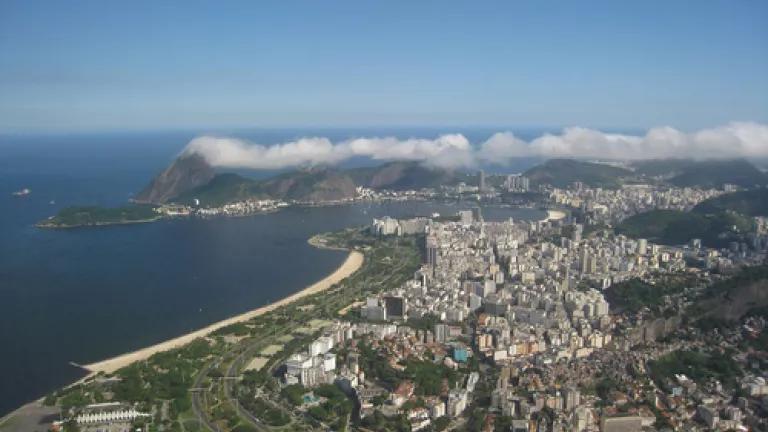
It’s probably just me, but when I hear the word “Rio” I think of that really awful song by Duran Duran from the early 1980s. (And yes, the music video was even worse than the song.)
But this week Rio represents something very different.
More than 130 of the world’s top leaders are now gathered in Rio de Janeiro, Brazil for the three-day Rio+20 United Nations Conference on global sustainable development.
Earth Summit 2012, which got its official start today, is the fourth meeting of its kind, and one of the major efforts this year, as evidenced by Tuesday’s Twitterstorm, is to phase out subsidies for fossil fuels.
Of course, we should all join in that global effort to divert the $1 trillion spent on dirty oil, gas and coal each year into renewable forms of energy.
But here is another big reason why we should really care about a global summit that is taking place almost 5,000 miles away: cities.
In short, making cities more sustainable is absolutely critical to making the world more sustainable.
Not convinced? Consider these facts:
- For the first time in history, a majority of the world’s people lives in cities—and this percentage will rise to 70% by 2050.
- Stated another way, for the next 40 years, roughly 1.3 million people will move into cities around the world every week.
- The world’s cities consume as much as 80% of energy production globally and account for a roughly equal share of worldwide greenhouse gas emissions, while occupying just roughly 3% of its land.
But the flip side is that cities can -- and indeed many already do -- lead the way on environmental sustainability:
- While cities take up only approximately 3% of the land, they have the capacity to house much of the world’s population. Thus, urban density helps protect our critical rural ecosystems.
- On average, city inhabitants have a carbon footprint 14% less than the typical American living outside the city.
- Cities provide great potential for slashing pollution from transportation, the second largest source (28%) of US greenhouse emissions after electricity production. Indeed, according to one estimate, cities can decrease the number of car trips by 10-20% through ramped up use of bikes and trains, and by walking more.
In the United States alone, an astounding 83 percent of the population (around 260 million) lives in cities. And as my NRDC colleague Jacob Scherr noted several months ago, many of those cities, New York included, are already on the sustainability path, putting America in a great position to take the lead toward creating smarter cities and improved urban living conditions at Rio+20 this week.
And just yesterday in Rio, New York City Mayor Michael Bloomberg told delegates from the C40 cities that New York had shrunk its carbon footprint by 13 percent in the past five years, and that nearly two-thirds of the C40 climate change actions had been funded by city budgets.
Mayor Bloomberg could also have boasted that New York City has one of the lowest per capita carbon emissions of any city in the world, and has one the highest uses of subways and other sustainable transportation.
As Duran Duran sang 30 years ago: “Her name is Rio….and when she shines she really shows you all she can.”
Let’s hope the other Rio shines this week and shows the rest of the world why cities matter for the planet’s survival.
Be sure to check out what NRDC is doing to make New York City a leader in urban sustainability!
